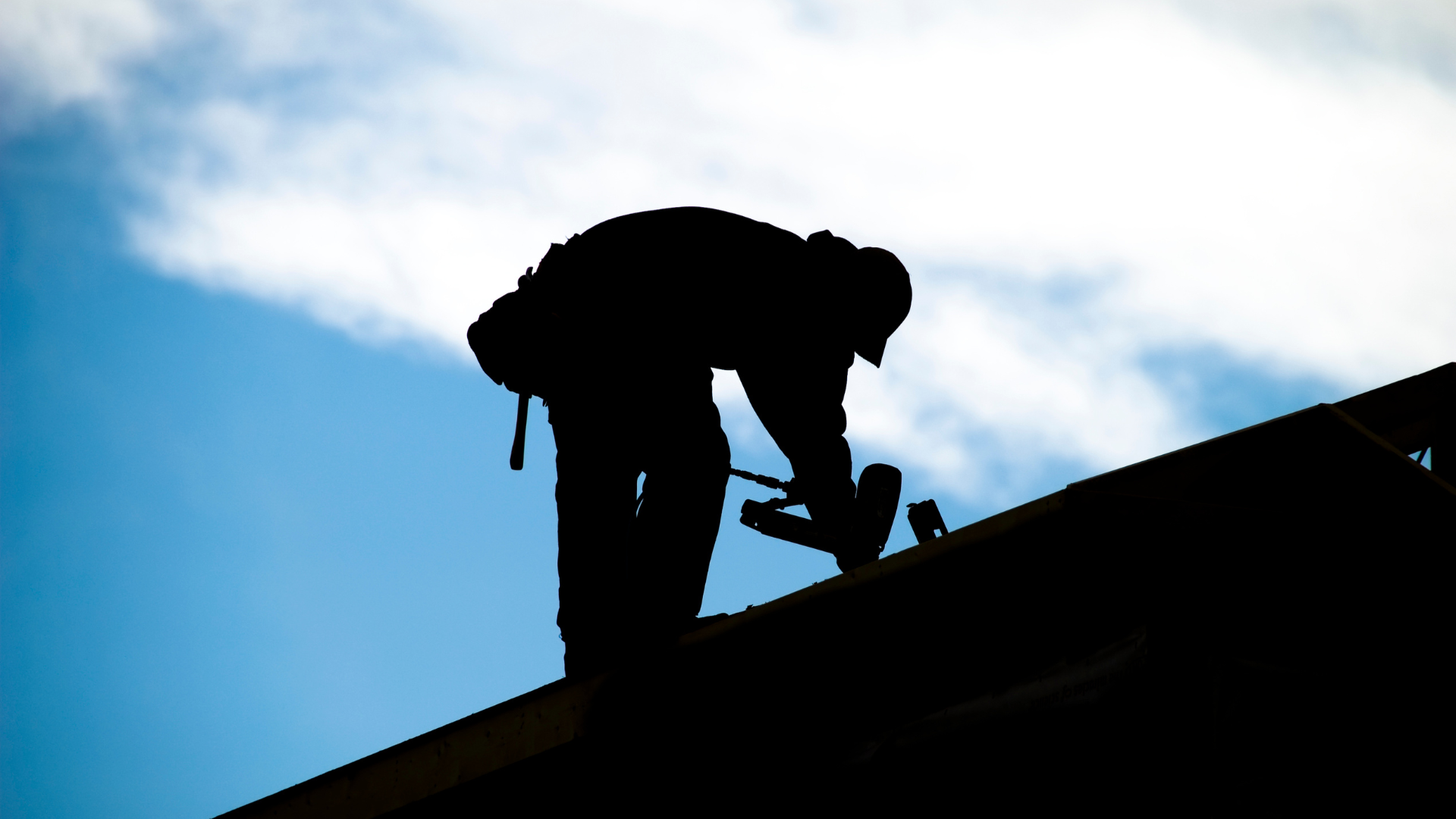The Hidden Damage Your Last Roofer Left Behind
When a roofer tells you, “You’re all set,” you want to believe them. But here’s the hard truth: just because your roof looks good doesn’t mean the work was done right.
We see it all the time across Elkhart and the surrounding states — a commercial roof that was “repaired” last year is now leaking like crazy, seams are pulling apart, or the insulation underneath is soaked. The business owner paid for a fix, but what they really got was a Band-Aid that’s now causing thousands of dollars in hidden damage.
The worst part? Most of this damage isn’t obvious from the ground. It hides under membranes, in seams, or beneath HVAC curbs — slowly rotting insulation, rusting deck panels, and driving up energy costs.
Shady contractors count on this. They know you probably won’t climb up there yourself. They know you’re too busy running your business to double-check their work. And by the time you find out what they left behind, you’re stuck paying for it.
So, what should you be looking for — and how bad can it really get? Let’s break it down.
1. Trapped Moisture That’s Eating Your Roof From the Inside
One of the sneakiest — and most expensive — problems we find is trapped moisture. Bad roofers cut corners when it comes to drying and sealing. Maybe they slapped a patch over wet insulation. Maybe they sealed over a damp deck. Either way, that moisture is now locked inside your roofing system, quietly destroying it.
Here’s what happens next: insulation starts to break down, wood decks rot, and steel decks rust from underneath. On top of that, wet insulation loses its R-value, which means you’re bleeding money every month on higher energy bills.
And you won’t see any of this from the surface. The roof might look fine for months — sometimes years — until soft spots start forming or water finally punches through your ceiling. By then, the damage has spread far beyond one small area.
A real commercial roofer should use proper testing (like infrared scans or core cuts) to catch this kind of hidden damage. But shady contractors skip it because they don’t want to slow down or spend the money on doing it right.
2. Loose or Improperly Sealed Flashing That’s Letting Water In Every Storm
Flashing is one of the most common failure points on a commercial roof — and bad roofers know most building owners will never notice if it’s done wrong.
Flashing is what seals the edges, walls, HVAC curbs, and any other penetrations on your roof. If it’s loose, wrinkled, or sealed with the wrong materials, water can slip right in during every storm. Sometimes, it doesn’t even take heavy rain — just a little wind-driven drizzle is enough to start leaking into your insulation and deck.
The real kicker? The leak might not show up inside your building for months. Instead, that water will slowly soak insulation and corrode fasteners, spreading further and further before you see a single stain on your ceiling tiles. By then, you’re not just looking at a roof repair — you might be dealing with interior damage and mold remediation, too.
A trusted commercial roofer will always inspect and re-seal flashing properly because they know it’s one of the biggest weak spots on any roof. But the fly-by-night guys? They’ll smear on a little mastic, call it “good enough,” and hope you never climb a ladder to check.
3. Bad Seams That Are One Windstorm Away From Failing
Seams are the backbone of your commercial roof. If they’re weak, the whole system is weak. And unfortunately, sloppy seams are one of the most common problems we find after other roofers “finish” a job.
Here’s how it happens: instead of properly cleaning and welding or sealing the seams, a lazy roofer rushes through it. Maybe they didn’t heat-weld long enough. Maybe they used the wrong adhesive. Or maybe they just overlapped the membrane and hoped for the best.
The result? Every strong windstorm is tugging and pulling at those bad seams. Eventually, they pop open, letting water race underneath your roof system. Once that happens, the damage spreads fast — insulation gets soaked, adhesives break down, and entire sections of your roof can start to peel back.
We’ve torn off roofs where you could literally peel the seams apart with two fingers — that’s how poorly they were done. And the worst part? You won’t notice until it’s too late because the seams can look fine to an untrained eye.
A professional commercial roofer knows that seams need to be tested and double-checked — not just sealed and forgotten. But too many contractors gamble with your roof because it saves them time on install day.
4. Wrong Materials That Were Never Meant for Your Roof
Not every roofing material works for every building — but bad roofers don’t care. They’ll use whatever they can get cheap or whatever’s sitting in their warehouse, even if it’s completely wrong for your roof system.
We’ve seen it all: coatings slapped over roofs that were too far gone to restore, residential-grade sealants used on commercial flat roofs, and incompatible materials layered together just to save a buck.
At first, it might look fine. But the wrong materials fail fast. Coatings crack and peel within a season. Cheap sealants dry out and separate. Some products even react with existing materials, causing bubbling, blistering, and premature failure.
Here’s the harsh truth — a commercial roof isn’t a one-size-fits-all situation. What works for a low-slope TPO roof might be a disaster on an EPDM system. What works for a newer roof might trap moisture and rot out an older one.
The right contractor will evaluate your roof’s condition, your building’s use, and the climate before recommending anything. The wrong contractor? They just want to get paid, and they’re counting on you not knowing the difference until it’s too late.
5. Hidden Structural Damage That Could Shut Your Building Down
This is the nightmare scenario — and we see it more than we should. A bad roofer cuts corners, ignores obvious warning signs, and leaves you with structural damage that puts your entire building at risk.
Here’s how it happens: trapped moisture and slow leaks rot wood decking or rust steel panels. Over time, the roof loses its structural integrity. We’ve walked on commercial roofs where the deck literally flexes underfoot because it’s so saturated and weak. One bad storm or heavy snow load, and sections of that roof could collapse.
Even if it doesn’t cave in, hidden structural damage can trigger costly problems. Building inspectors can flag it, insurance claims can get denied, and tenants or employees could be forced out if the roof isn’t safe. All because someone didn’t take the time to do the job right in the first place.
A real commercial roofer knows how to spot these risks early — soft spots, rust lines, fastener pull-outs, and sagging areas. But the wrong roofer? They either miss it because they don’t know what they’re doing, or they hide it because fixing it the right way would cost too much and eat into their profits.
If your roof hasn’t been properly inspected since the last crew worked on it, you could be sitting on damage that’s quietly getting worse every single day.
Why You Didn’t Catch It Right Away (and Why Your Roofer Hoped You Wouldn’t)
Most commercial building owners don’t realize something’s wrong until water is dripping on the floor. And that’s exactly what shady roofers are counting on.
Here’s why you didn’t notice:
Commercial roofs hide damage well. Insulation can soak up gallons of water before it ever shows inside your building. Seams can fail slowly, letting moisture spread underneath without a single visible leak.
You’re not climbing up there every week. You’re running a business, not crawling around on your roof. Contractors know you’re busy — and they take advantage of that.
They made it look good — on purpose. A quick coat of coating, some sloppy sealant, and from the ground it looks brand new. But what’s under that surface is a whole different story.
And here’s the hard truth: many bad roofers don’t just ignore hidden damage — they hope you won’t find it until after their “warranty” runs out or they’ve skipped town. By then, the repairs cost 3–4 times more than if it had been done right the first time.
The only way to know for sure what’s happening under your roof system is to get it inspected by someone who isn’t afraid to call out problems — even if they weren’t the one who caused them.
The Cost of Letting It Sit (and How Fast It Can Add Up)
Every week you wait, that hidden damage gets worse. And the longer it sits, the more expensive it gets to fix.
Here’s what we see happen all the time:
A small leak turns into a soaked roof system. One puncture or bad seam can let water travel 20–30 feet under the membrane. By the time you notice, entire sections of insulation are ruined and need to be replaced.
Energy bills skyrocket. Wet insulation loses its R-value, so your HVAC works twice as hard. That’s money burned every single month.
Interior damage piles up. Ceiling tiles stain. Walls bubble. Inventory gets ruined. Sometimes tenants demand rent cuts or even leave because of roof leaks.
What could’ve been a simple repair turns into a full replacement. We’ve seen $2,000 fixes ignored until they turned into $50,000 replacements.
And let’s be blunt — insurance companies don’t always pay for negligence. If they think you ignored obvious maintenance, you could be stuck footing the entire bill yourself.
The bottom line? A commercial roof doesn’t heal itself. If your last roofer left you with hidden damage, every day you wait is another day you’re throwing money away.
What a Real Commercial Roof Inspection Should Look Like
If you want the truth about your roof, you need an inspection that actually digs deeper than a quick walk-around. A good commercial roofer doesn’t just glance at the surface and call it a day — they investigate.
Here’s what a real inspection should include:
Full Roof Walk: Every seam, flashing, curb, and penetration should be checked up close — not just from the edges.
Moisture Testing: Infrared scans, core cuts, or other testing methods should be used to find trapped moisture that isn’t visible. If your roofer isn’t doing this, they’re guessing.
Detailed Photos and Documentation: You should get clear pictures and notes, not vague comments like “some wear and tear.”
An Honest Assessment: A trustworthy roofer will tell you exactly what’s wrong, how serious it is, and whether it can be repaired, restored, or needs replacement. No scare tactics. No upselling.
A Plan to Stop Further Damage: You should leave that inspection knowing what needs to happen now to prevent things from getting worse.
If your last roofer didn’t give you this level of detail, chances are they either didn’t look — or didn’t want you to know what they found.
Don’t Let Someone Else’s Mistakes Drain Your Budget
If your last roofer cut corners, you’re the one paying for it now — higher energy bills, hidden leaks, and repairs that just keep piling up. The worst part? Most of this damage can be stopped if it’s caught early.
At American Builders, we don’t just “look around” and give you a guess. We find the real problems, show you exactly what’s happening under your roof, and give you straight answers on how to fix it — the right way, the first time.
If you own or manage a commercial building in Elkhart, Indiana, or anywhere in Indiana, Michigan, Ohio, or Illinois, don’t wait for the damage to get worse.

